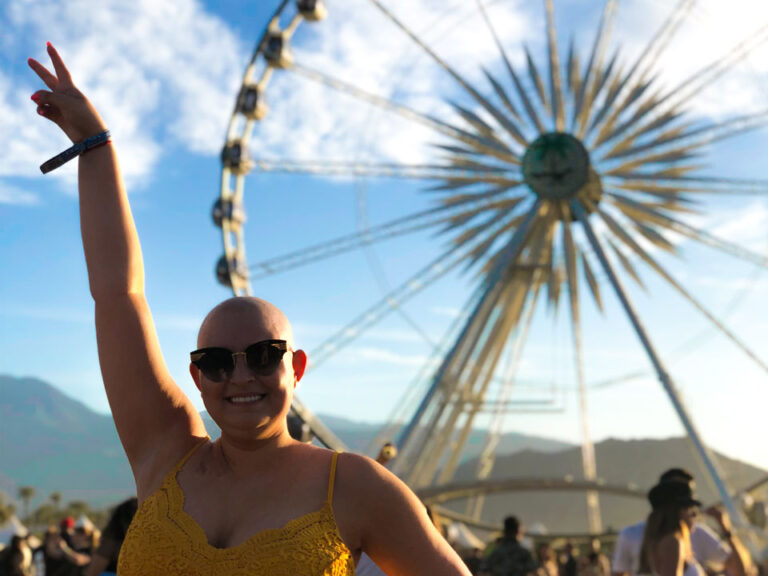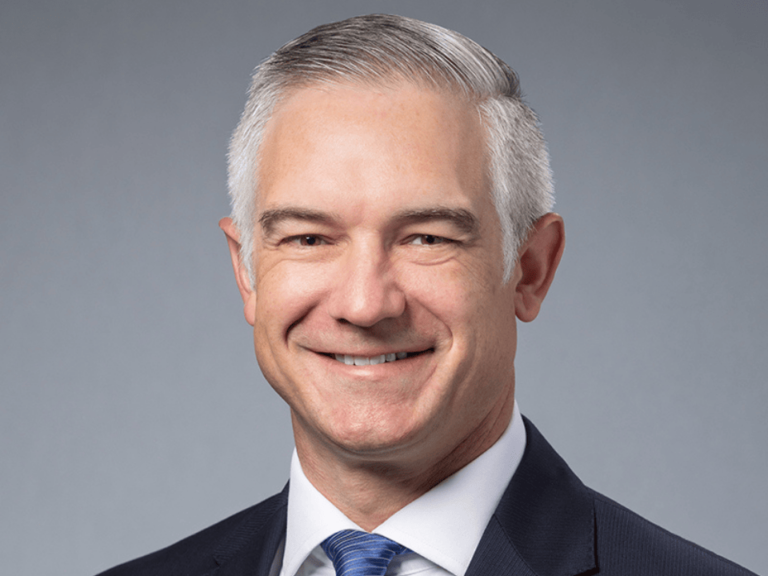The National Cancer Moonshot Initiative is not slated to receive funding in fiscal 2017—neither the House nor Senate appropriations bill includes the $680 million the White House proposed for Vice President Joe Biden’s project.
Despite great bipartisan breast-beating in support of boosting the NCI and NIH budgets, Congress has not dedicated funding for the moonshot, a broad scientific and public health effort focused on improving clinical trials, data sharing, and streamlining regulatory processes for oncology products at FDA.
Congress hasn’t reached a compromise on appropriations, and with the end of the fiscal year just a week away, lawmakers will likely pass a continuing resolution that would last at least through December. Insiders say it’s not surprising that funding for the moonshot wasn’t included in the short-term, stopgap bill as well.
Congress is expected to renegotiate the appropriations bills before the 2016 calendar year ends.
“Vice President Biden is working with his former colleagues on Capitol Hill to explore all potential vehicles for funding the Cancer Moonshot,” a spokesperson for the Office of the Vice President said to The Cancer Letter.
Biomedical research advocates, oncology professional societies, and federal agencies say they “remain optimistic” about the moonshot’s funding prospects, citing NCI’s Blue Ribbon Panel recommendations (The Cancer Letter, Sept. 9).
“We are very fortunate that Congress has shown strong bipartisan support for cancer research, and, based on the FY17 House and Senate Labor-HHS subcommittees’ bills, we are hopeful that this support will result in increased funding,” NCI Acting Director Doug Lowy said to The Cancer Letter. “The Cancer Moonshot Blue Ribbon Panel Report reflects unprecedented consensus across the cancer community for where we can make rapid progress if we have the necessary resources and sustained increases in the coming years.”
The White House’s funding plan for the moonshot, which would involve diverting funds from NIH, is one reason why the program lacks specific funding in the current appropriations bills, NCI officials said in a legislative update.
“This is not surprising, based on both the specifics of the President’s budget request and the lukewarm reaction that the appropriators have had to the proposal itself,” the NCI legislative update states. “It is important to note that the President’s budget proposal did not request additional funding for the Cancer Moonshot from the appropriations committees. To the contrary, the budget requested a $1 billion decrease in the NIH appropriation, while simultaneously requesting an even larger increase in mandatory funding, of which $680 million was specified for the Cancer Moonshot.
“The appropriations committees manage the distribution of discretionary funds, they do not create new mandatory funding streams or disperse mandatory funds. Mandatory spending, such as Medicare and Social Security, are controlled by legislative committees (authorizers) and must be authorized by law.”
Clinton: “I Will Take Up the Charge”
The Senate Committee on Appropriations slated an increase of $2 billion for NIH—matching last year’s increase—which would boost the NIH budget to $33.3 billion in FY17. The bill provides $5.43 billion for NCI, $216 million above the FY16 level.
The House version of the bill gives NIH a $1.25 billion increase, with NCI receiving a 2.4 percent increase in funding to about $5.34 billion, falling short of the 13 percent increase proposed by the White House.
An amendment to add $750 million to fully fund the moonshot initiative, introduced by Rep. Rosa DeLauro (D-Conn.), was defeated.
“In order to continue our momentum and build on the impressive work that is already underway to fight cancer, Congress needs to provide robust and sustainable funding to the NIH and a specific boost to NCI for the Moonshot,” Daniel Hayes, president of the American Society of Clinical Oncology, said to The Cancer Letter. “ASCO is on Capitol Hill [Sept. 22] urging Congress to take action to provide funding for the Moonshot to significantly expedite our nation’s progress against cancer. I remain optimistic that Congress will fund the Moonshot and sustain robust funding levels for the NIH as a whole before the end of their legislative session.
“In just nine months, the Moonshot Initiative has unveiled dozens of initiatives to improve research and treatment of cancer, building on the impressive work that is already underway to fight cancer,” said Hayes, who is also professor of internal medicine, the Stuart. B Padnos Professor in Breast Cancer, and the clinical director of the Breast Oncology Program at the University of Michigan Comprehensive Cancer Center. “ASCO applauded the Blue Ribbon Panel for their report highlighting ten additional areas where funding and effort is needed, and we’re looking forward to seeing the recommendations still to come from Vice President Biden and the Task Force.”
Democratic presidential nominee Hillary Clinton has pledged to support the moonshot if she wins the November elections.
“To start, Congress should fulfill the administration’s request for moonshot funding next year,” Clinton said in a statement. “Cancer does not discriminate, and I believe leaders of both parties can come together to tackle this disease as part of a comprehensive effort to improve medical research across diseases, both by restoring robust funding to the NIH, including the NCI, and by harnessing the power of the private sector.
“And we will continue to build on Vice President Biden’s work to mobilize the cancer community, make sure that scientists work together, and enable more patients to enroll in clinical trials. By combining new funding with creative approaches, we will not only catalyze progress against cancer: We will strengthen the nation’s entire scientific enterprise.
“I could not be prouder to stand with Vice President Biden in this fight, and as president, I will take up the charge. My administration will carry out the mission the vice president has set, and continue to call on his advice, leadership, compassion, and sheer strength of will. Together, we will seize this moment. Together, we will make cancer as we know it a disease of the past.”
Republican nominee Donald Trump has not issued a statement on the moonshot. His campaign didn’t respond to emails from The Cancer Letter.
“American Cancer Society Cancer Action Network urges Congress to seize the opportunity to boost funding for the NIH and NCI in their final FY17 budget,” ACS President Chris Hansen said in a statement. “We are at the cusp of so many promising new developments in diagnostic tests and treatments that now is the time to re-invest and accelerate that research.
“Earlier this month, nearly 700 volunteers from every state went to Capitol Hill to make clear that funding the Moonshot and reducing death and suffering from cancer should be a top national priority. When the FY 2017 budget process resumes after the election, we trust that members of Congress will remember the conversations with our volunteers and supporters and will take action to fully fund the cancer moonshot.”
Funding the 21st Century Cures Act
There is another way to fund the moonshot, aside from appropriations: Congress can channel dollars through the 21st Century Cures Act, legislation passed by the House in July 2015 that seeks to modernize clinical trials and speed up the drug approval process (The Cancer Letter, July 10, 2015).
“The American Association for Cancer Research is strongly advocating for the FY17 Labor-HHS-Ed Appropriations bill to include the necessary funding to support the programs and projects that are required to help advance the Administration’s National Cancer Moonshot Initiative, such as the recently released recommendations from the Cancer Moonshot’s Blue Ribbon Panel,” AACR President Nancy Davidson said to The Cancer Letter. “In fact, we believe that by implementing the innovative Blue Ribbon Panel recommendations, we will transform the way we prevent and treat cancer, and improve the outlook and quality of life for cancer patients.
“The wealth of scientific opportunities also underscore the importance of robust and sustained budget increases for the NIH and NCI, and highlights why we are also calling on Congress and the Administration to finalize a Senate version of the House-passed 21st Century Cures Act,” said Davidson, who is also director of the University of Pittsburgh Cancer Institute. “We believe that the 21st Century Cures legislation is an excellent mechanism for supplementing NIH and NCI funding, particularly for National Cancer Moonshot-associated programs and projects.”
On Sept. 22, AACR, ASCO and over 300 national organizations convened in Washington, D.C. for the fourth annual Rally for Medical Research, to lobby for sustained budget increases to NIH.
The budgets for NIH and other federal health agencies have largely been flat for about a decade, and are now recovering from the 5.1 percent across-the- board budget cuts in the 2013 sequester.
The moonshot is unprecedented in the history of cancer research in the U.S.—a rare national opportunity to expedite progress, said Ellen Sigal, chair and founder of Friends of Cancer Research.
“Through the Moonshot, Vice President Biden challenged us all to further commit ourselves and do all we can to accelerate the advancement of cancer research,” Sigal said to The Cancer Letter.
“The entire community answered the Vice President’s call and has already put forth bold new ideas changing how we think about research, how we collaborate, and improve how we evaluate new treatments.
“Congress must now do its part, and rise to the challenge that we all have, by not only appropriating the necessary funding for NCI, NIH, and FDA, but by also passing the pivotal 21st Century Cures legislation into law. If Congress does not take action, the incredible opportunities before us, to find better treatments, make them safely available to patients faster, and improve the ability to detect and prevent cancer at earlier stages, will be lost.”
It’s not too late to secure funding for the moonshot, said Ellie Dehoney, vice president of policy and advocacy at Research!America. “It should be a priority of Congress to put resources behind an effort that could well make what was impossible, possible,” Dehoney said to The Cancer Letter. “Members should look to the Cures initiative and the appropriations wrap-up in December, utilizing both vehicles to help fuel the moonshot.”
Appropriations must be completed as soon as the November elections are complete, said Jennifer Zeitzer, deputy director of public affairs and legislative director at the Federation of American Societies for Experimental Biology.
“The lack of funding for the Cancer Moonshot is just one of many issues Congress needs to resolve over the next few months, and is a clear example of why it’s absolutely critical that they come back after the election and pass an omnibus appropriations bill,” Zeitzer said to The Cancer Letter. “Without an NIH budget, funding for all research, including cancer, faces a very uncertain future.”
Advocates Push for Short-Term CR
A long-term CR would postpone the budgeting process and delay funding for new programs, including the NCI’s Blue Ribbon Panel recommendations and other projects in the National Cancer Moonshot Initiative.
This is not new: in the past 19 years, Congress has used two to 21 continuing resolutions per year to keep the federal government open. The last time Congress passed all spending bills on schedule was in 1996.
“This is the same movie script that we’ve seen for many years now in terms of they haven’t been able to agree on the appropriation bills by the time they need to, Oct. 1, so we go into this continuing resolution,” said Jon Retzlaff, managing director of the Office of Science Policy and Government Affairs at the American Association for Cancer Research.
“It’s like Groundhog Day, where you see the same thing over and over again in terms of Congress not being able to get its work done by the end of the regular fiscal year, so it requires a continuing resolution,” Retzlaff said to The Cancer Letter.
“There is a lot of momentum right now for NIH to receive robust, sustained, and predictable budget increases,” Retzlaff said. “We hope that that method will translate or will be adopted by whomever is in office and whatever changes take place in Congress and in the White House.”
AACR issued a statement commending Clinton’s pledge, and urged Trump to express support and commitment to continuing the moonshot, should he be elected president.
Though Congress might pass a CR that extends into March, the federal government will most likely be operating on a three-month CR, said Matthew Hourihan, director of the R&D policy program at American Association for the Advancement of Science.
“That’s what Democrats favor, that’s what Republican leadership favors, but a minority of Republicans are pushing for a longer CR,” Hourihan said to The Cancer Letter. “Congress definitely seems interested in getting things done before the end of the calendar year.
“So while the election outcomes may influence the negotiations to some extent, it’s not as though we’re in a situation where appropriations may carry into the new Congress, which would mean the new Congress would have responsibility for making those decisions.”
Research advocates and defense organizations are teaming up to pressure Congress to complete the FY17 spending bills, instead of passing a long-term CR.
“We urge you to ensure FY17 funding decisions are crafted to advance the best interests of the American people and the strategic interests of the United States,” Research!America and the Aerospace Industries Association said in a joint letter. “No priorities more concretely meet these imperatives than sustaining a strong and nimble national defense and rebuilding the inflation-eroded budget of the NIH.”
AACR is advocating for a shorter CR, Retzlaff said. “There’s so much uncertainty that happens in the scientific community when you don’t know what the budget is going to be, you don’t know how your grant is going to be funded,” Retzlaff said. “With all that uncertainty, it’s best to get this resolved in the calendar year 2016.”
This uncertainty comes as the National Cancer Advisory Board voted Sept. 7 to support increased appropriations for the moonshot and the Blue Ribbon Panel’s recommendations.
“Appropriators have said they are waiting for more detailed information from NIH before they allocate that funding,” Hourihan said. “The moonshot task force did release their goals and prioritizations last week, so that’s one piece of the puzzle.
“Appropriators may feel that provides enough detail to provide additional funding, but they may also … want to hold out for even more detail from NIH. They certainly have signaled support for the moonshot in principle, but they want to know how funding is to be allocated and what the funding will be used for.
“The Senate did not specify a particular number, but NCI got an even bigger increase in the Senate than in the House, so it’s safe to assume that some of that funding in the Senate bill will be used for the moonshot,” Hourihan said. “It’s not a question of whether it will be funded or not; it is getting some funding. The question is how much it will end up with in the final appropriations.”
In addition to the $2 billion increase proposed in the Senate bill, Retzlaff said AACR “would like to see the authorization bills—the [21st Century] Cures bill and the Senate Innovation Act—include those dollars for NIH, which could probably help fund the Cancer Moonshot Initiative.
“Consistent growth can bring some certainty in the scientific community in terms of expectations and young researchers feeling as though they have a chance when they submit a grant,” Retzlaff said. “To take advantage of all the unprecedented scientific opportunities that currently exist today requires additional funding because the ideas are building on top of the ideas, and that requires more dollars.”













